Two years ago I can’t imagine I would be as excited as I was yesterday about watching David Chang’s Harvard Lecture on “Microbiology: An Overlooked Frontier” he made in 2011, David is the chef at Momofuku. This lecture on microbes and their flavour profile is interesting for me personally on two different levels, one because I want to make my own miso paste for allergy kid and on the other level is my interest in sourdough culture.
Tasty Microbes
David Chang talks of a significant moment for him when he attended a lecture by professor Roberto Kolter in 2010 where the professor stated, ‘the future of food is microbiology’. This started David’s enquiry of different flavours obtained by different micro-organisms and interestingly their place of origin. I would recommend to watch this lecture, you’ll see in the beginning the mind boggling numbers of microorganisms and their genome by David Weitz, professor of physics at Harvard.
Fermentation Has New Disciples
Fermentation is trendy it seems and so it should be, as a species we’ve always preserved in seasonal glut for the lean times in our calendar. If more of us are taking up allotments or buying local grown produce makes good sense to have a few jars of goodies for the storecupboard, but we’re not just talking sauerkraut here. When I visited Hawksmoor over a year ago and saw a burger with kimchi I thought, ‘ hey, this Korean pickle has become main stream’. Since then I’ve become aware how popular home fermentation has become from the professional kitchens such as Noma and their Nordic Food Lab where they preserve meat, balsamic vinegar, their version of miso paste using Nordic ingredients, to many blog posts and tweets from people busy preserving away. The book that pops up often is Katz’s Wild Fermentation book, as I plan to make my own miso I’m ordering a copy.
Making Miso
I asked Linda, a chef and creator of Playing with Fire & Water for any advice she could give on making my own soya-free miso for allergy kid, I remembered she had posted making miso here. She gave me some good advice and said at the bottom of the email that I might find David Chang’s lecture interesting.
I need to make miso paste that is both soya-free and legume-free for allergy kid because I can’t buy it. I’ll be ordering the rice koji inoculated with Aspergillus oryzae from a site selling it here, and there’s a great blog post on how to make miso here. It takes from 6 months to a year, we’ll see if I succeed.
Microorganisms, Environment & Sourdough Starters
I don’t have to point out the obvious that sourdough is a fermentation, an environment where wild fungi and different bacteria thrive in, and as a consequence of that they provide the baker with rise and flavour in the dough resulting in a delicious loaf. Lucky us.
What struck me watching David’s slides of when he inoculated his pork with aspergillus oryzae, trying to produce “bonito-style” dried pork shavings (aspergillus oryzae is used for this, miso, soy sauce and other Japanese fermented products), was that on analysing the fungi they found it wasn’t aspergillus oryzae taking hold in the pork but instead it was pichia, a different genus altogether. Pichia is commonly found on pork preserved products of European countries. This signified to David how the environment itself, the kitchen in his restaurant in New York was dictating what grew on the products he’s trying to preserve. For David this was an exciting step and if you watch the lecture he explains why. For me this showed clear evidence about sourdough starters and their environment which I wrote about last year.
A few weeks ago I was having a conversation with Anne about microorganisms and sourdough, she is known on this site as the miller of Felin Ganol watermill, producing some of the tastiest flour I’ve worked with, well, what you may not know about Anne is her background in biology, specialising in microbiology and biochemistry and in fact she has a PhD. I should really refer to her as Dr Anne Parry but knowing her I’m not sure she would appreciate it. In this conversation Anne said, the only way to keep a microbe “pure” was to keep it in a sterile environment. David’s presentation slides of his pork being inoculated with aspergillus oryzae but finding pichia growing wasn’t a surprise, but gave me an “aha!” moment. Those moments where connections are made, where different learnings come together nicely, connections was something Linda wrote about in her blog last year.
Remember in my post Life Cycle of Sourdough Starter Part I, I said how it was pointless to have sourdough starters from around the world because they won’t keep their individual characteristics? The reason being as research shows and Debra Wink brought it to our attention, the microbes in your starter will be determine by its environment, the flour, the feeding schedule and the temperature it’s kept at, the starter will evolve with what’s around it. David’s slide of aspergillus oryzae and pichia gave me that moment of “aha!” yes of course…it makes sense, it all ties in together, microbes and their environmental evolvement, to adapt and survive, that’s what they do best, be it in preserved products or in our sourdough starters.



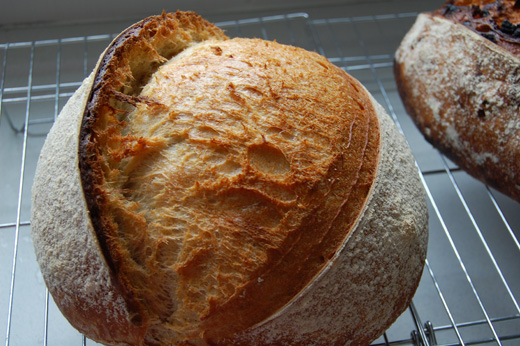
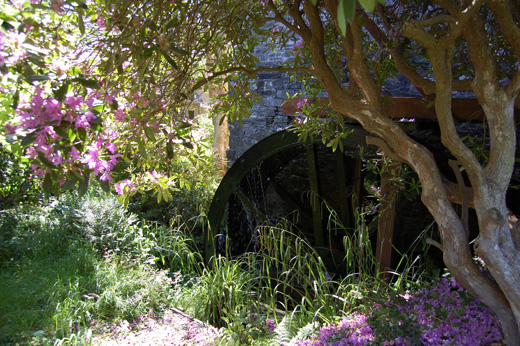
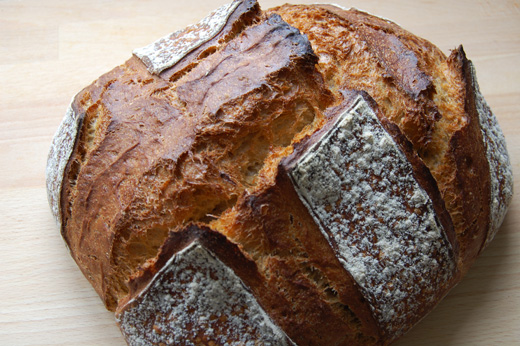



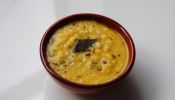


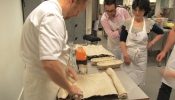

















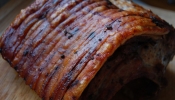

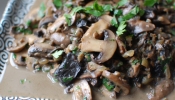

{ 14 comments… read them below or add one }
Debra Wink told me that a sourdough culture will keep it’s characteristics if kept healthy. It is the reason we don’t have one generic “taste” for cheeses, breads, drinks etc. Bleu cheeses are still around because their culture doesn’t become generic over time. Perhaps no culture is “pure” and they do adapt, but maybe there is an overall characteristic they hold onto in their own family? If the San Francisco microbe is so easily lost once it leaves San Francisco, why do they find that particular microbe all around the world and can identify it? I think this debate will rage on for some time…. great post Azelia!
Hi Teresa
Yes very interesting world this one, and after a few days of watching these lectures and reading some of what Roberto Kolter has written it appears this subject will receive more attention, more research and we will all benefit from this further knowledge!
I’m not sure what Debra meant by keeping its characteristics if kept healthy? She was very clear in the Fresh Forum piece how starters change according to its environmental factors, “Contrary to myth, the species that grow in sourdough starters are not tied to geographic location, but rather to the traditional practices in the different regions. Several organisms go into the mix, but the environment created inside the starter from the combination of flour, temperature and maintenance routines is what determines which ones will thrive.”
When you say, “If the San Francisco microbe is so easily lost once it leaves San Francisco, why do they find that particular microbe all around the world and can identify it?” does that mean you think the Lactobacillus sanfranciscensis microbe originated from there and then travelled to other parts of the world? That’s not how I read it.
What I read is that there are certain types of bacteria found in sourdough out of many more existing in other things, and lactobacillus sanfranciscensis is one commonly found in starters around the world maintained at ambient temperature. It was first detected and named in San Francisco giving it its name but that’s all.
If there is a group of bacteria found in starters, it’s not surprising therefore the same ones are going to pop up in different countries that keep those starters in similar conditions. The same way different races of people from different countries can suffer from the same types of diseases because they are common with human beings.
I’ve heard the beer industry have to flush out the production line after a while to make sure the strain of yeast they use doesn’t change and therefore change the flavour of the beer and afterwards they re-introduce the pure strain again, in order to keep consistency. This very much ties in with keeping “pure” strains in sterile environments.
Milk will have its own set of common bacteria and cheese making is manipulation of that within the environment its fermented in.
There will be strains of bacteria growing in sourdough starters not found anywhere else on the planet, only existing in that environment, that’s something Debra commented on and then I read in the LAB book which reference the research papers done on it.
What I highlight in this post with regards to David’s slide is that he inoculated with one fungi but a complete different family of fungi took hold in the pork, that is a fact, evidence, and one can not argue with that.
Whilst overall in the case of sourdough baking I would agree with you Azelia, basically because most sourdough bakers procedures and environments are insufficiently sterile (usually quite the opposite) to maintain a culture ‘pure’ and unlike brewing there has been relatively little scientific work on identifying different microorganisms in sourdough cultures from one bakery to the next. There are however clear examples of fermentation cultures and processes that have clearly a specific geographic/historic origin, at least in human use, quite clearly defined procedures for use, that have spread from one person to another and work OK away from their origin. You mentioned one, rice koji, other obvious examples, verifiable without scientific equipment, would be kombucha tea, milk kefir and water kefir.
I love bacteria! In fact, I go to great lengths to bring my own personal ‘flocks’ (or whatever one calls clusters of bacteria) to good health and keep them happy. I’m not joking. And yes, I consider them one of our most important microbial allies in this weird world. One thing we know for sure, they’ll be here a lot longer than we will.
And I appreciate your fascination with them also – good post.
(Have I ever told you how much I HATE Captcha? Mostly because it doesn’t work! Although you have it set very simply -so it’s hard to misread- even with all letters/numbers correct, it won’t accept a comment! BAD.)
hi Doc – yes I remember you liked fermenting!
I’ve asked for a Captcha to stop the spam, at times use to get troublesome having to get rid of certain ones I didn’t wish to wake in the morning to! Are you saying this one is still hard to see? I’ve asked for a simpler version than I use to have.
Hi
Katz’s book is an interesting read, I can recommend it, I stank our garage out last year experimenting with Saurkraut, whilst garlic tastes nice in Saurkraut it really smells! I’ve been interested in fermented foods for a while and Miso is one I’ve not yet tried to make it seems with having a go at. Sadly your Koji site is out of stock until Sept 2012 and try as I might then I can’t find Koji in the UK.
On Sunday I fly out to Japan (Tamagawa) for a week with work and was, with the help of one of my Japanese colleagues going to try and source some Koji whilst I’m there. Would you be interested in me bringing some back for you?? I can’t promise anything but can try, if you’re interested then drop me an email and let me know (Dried/Fresh/Qty/etc). After reading your blog entry about your daughters allergies then if I can help in some small way then I will try.
Kate
hi Kate – what a kind offer, I didn’t realised the website koji was out of stock! I’ll email you.
Azelia – re Captcha, I have much success with something called Akismet, which is an available widget under my theme on WordPress (it may be on all WP themes) – it doesn’t look like it’s active on your blog – it really seriously cuts into the spam that gets through. I’m not lying, I can only remember one spam showing up since I put it in place some 3 years ago!
failing the above or for anybody else http://www.the-home-brew-shop.co.uk/acatalog/Sake_Koli-kin.html – I happened to check in Soho Japanese supermarket last week and they don’t stock
Thanks Andy for the link.
Well here I am in Japan, its a long trip, about 18 hours door to door. Just been shopping and had some nice Sushi for tea and now sitting back in my hotel room looking out on a very wet Kawasaki (Musashi-Kosugu to be more precise). Sadly both the local supermarkets (Foodium & Ito Yokado) are out of stock, my colleague tells me that making sho-koji (Salt marinated rice) is very popular this time of year hence the short supply.
In my haste I thought I’d managed to find some Koji and bought all 3 packets only to later find out with the help of my colleauge I’d actually bought Ama-Koji that’s used to make a sweet fermented rice drink, the Kanji writing for both is quite similar, at least to my untrained eye. Well its something new to try!
In the Wild Fermentation book resources it talks about GEM Cultures in the USA, they sell Koji starter kits (just the spores – as well as Tempeh & Natto kits) for $3 a piece and ship to the UK, it might work out cheaper than the UK place given by Andy depending on the shipping charges.
Kate
hi Kate – how wonderful and how very envious I am! It’s one of my must go places before I die, love such much that comes out of Japan. Thanks for looking and the tip on the US sites.
Have a great trip and share photos when you return, would love to see them.
hmmm interesting http://www.gemcultures.com/soy_cultures%20Without%20Kit%20Special.htm seems to indicate clearly they are offering different strains of Aspergillus oryzae according to end product – the UK supply one I linked to is clearly intended for sake making. This differentiation is precisely the kind things we don’t seem to pay attention to or know about for sourdough baking. There has been a certain amount of scientific work in Italy comparing cultures used for panettone v. bread baking and a comparative study of 186 Sicilian bakeries but without reaching any firm conclusions in either case as I recall – quite a few years since I delved into the academic research on the subject.
Question is I think whether differences between yeasts/lacto bacilli and strains of these in sourdough baking have time to express themselves compared to brewing and soy ferments so therefore whether worth researching (either practically or scientifically). I have done a fair bit of baking recently with barms from a local micro-brewery but again without reaching any firm conclusions.
I have to say I’m not sure what the difference is between the different Miso kits, I was just thinking it was all just the same spore and the difference was in the temperature the Koji was incubated at from the article I looked at here:
http://www.taylor-madeak.org/index.php/2008/10/17/growing-koji-for-homebrewing-sake
Whilst the heading talks about making Koji for Sake it talks about the differences between Koji for Sake and Koji for Miso
To quote:
“What’s more is that I’ve also learned that temperature has a definite impact on the kind of enzymes koji produces. In the lower half of koji’s preferred temperature range (85ºF-92ºF [29.4ºC-33.3ºC]) the mold produces mostly protease enzymes – a property that miso and shoyu makers take advantage of to break down their soybeans. However, in the upper half of that range (93ºF-100ºF [33.8ºC-37.7ºC]), mostly alpha amylase is produced.”
If GEM ever reply to my email asking about shipping to the UK I will ask them the differences between the spores, although the need for a temp controlled incubator for making the Koji is a little off-putting.
Kate